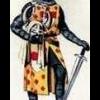Терминът "Влахи" /Българи/ през призмата на западноевропейската диалектика
-
Последна активност
-
- 3 мнения
- 40 прегледa
-
- 1282 мнения
- 134461 прегледa
-
Руско-украинската война 2022-2024 година. 1 2 3 4 149
От Р. Теодосиев, in Руско-украинската война 2022 година.
- 3713 мнения
- 198303 прегледa
-
- 17 мнения
- 1232 прегледa
-
- 34 мнения
- 12657 прегледa
-
-
Последно разглеждащи 0 Потребители
- No registered users viewing this page.



Препръчано мнение
Напиши мнение
Може да публикувате сега и да се регистрирате по-късно. Ако вече имате акаунт, влезте от ТУК , за да публикувате.